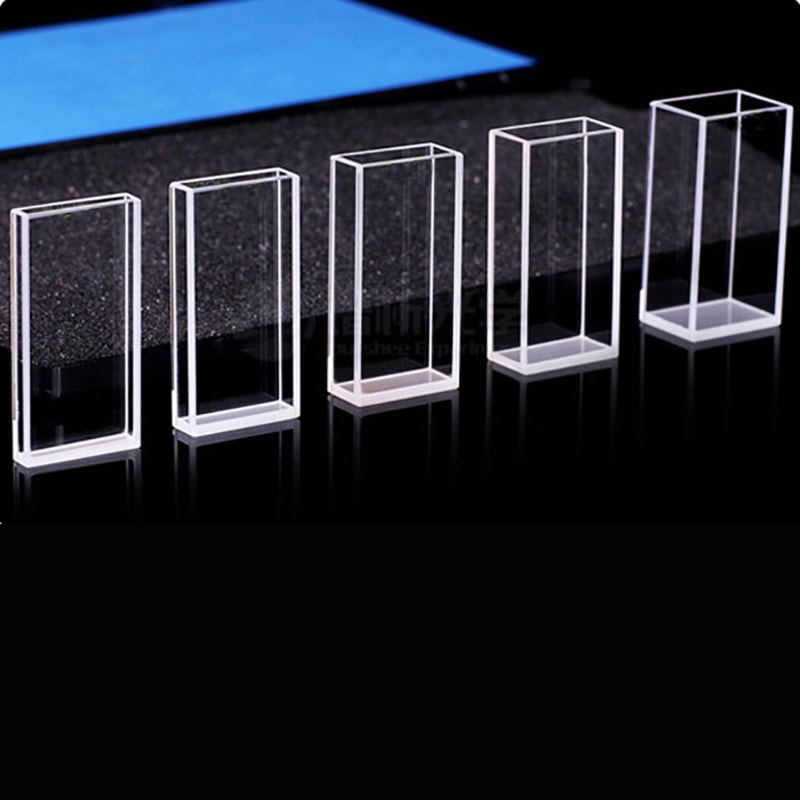Spectrophotometry, which reveals the secrets behind light transmittance and absorption at particular wavelengths, is an essential method of scientific discovery. At its heart lies the cuvette which is a modest but critical vessel that holds specimens for analysis. They may look simple however their intricate layout including the length of cuvette paths to the choice of material, is what unlocks accurate details about the substance’s concentration and the purity of the substance. Let’s explore this fascinating universe where dimensions and size of cuvettes determine the results of each experiment.
The Power of Cuvette Path Length
Imagine that a beam is passing through a sample. The result is based on the path length of the cuvette. This is how far light travels through the liquid. Many labs use standard cuvettes with 1 cm of path. This is the ideal solution to balance sensitivity and practicality. Why is this important? The longer the path of light, the greater the amount of light being absorbed. Therefore, the signal will be amplified when using diluted samples. However, for concentrated solutions such as proteins or nucleic acids shortening the length of the path can be a game changer. This method reduces the amount of dilution required in order to save precious samples and reduces the time needed to prepare. What’s the primary takeaway from this? It is an art to match the length of the path to samples’ requirements. This increases the accuracy.

Image credit: cuvet.co
Cuvette Dimensions The Look at More Than What Meets the Eye
The size of the cuvette isn’t only about how much liquid is contained within it, it’s also about how the vessel is used by the spectrophotometer. They come in different volumes and shapes that are suited to specific needs. For example semi-micro cuvettes that have smaller dimensions and thicker walls tackle tiny sample volumes that could be a few microliters a rare biological extract. They have thick walls that allow light to traverse the sample without wasting even one drop. When comparing this with cuvettes it is a stark contrast the reduction in pipetting steps as well as fewer mistakes and results which hold up. This is an innovative tweak that proves size isn’t only an numerical number, but also a crucial factor.
The 1cm Path Length Cuvette The 1 cm Path Length Cuvette is a lab favorite
Why does the 1 cm path length cuvette rule the day in so many studies? It’s the sweet spot for biological studies, where samples are often scarce and every milliliter counts. This classic design delivers regular absorbance readings, without overloading the detector. It’s perfect for everything from DNA purity checks to enzyme assays. It’s not a hero that is universally applicable. There’s no one size fits all hero. Selecting the right instrument is crucial, and do not use only the one you are comfortable with. A tool that isn’t matched is comparable to a cuvette which isn’t well-matched.
Material Matters Beyond Path and Size
Cuvette dimensions tell only half the story material choice seals the deal. The high transmission rates of glass and quartz cuvettes permit light to flow through without interference. Cuvettes made of glass are tough and reusable, making them ideal for spectroscopy. Plastic cuvettes are also inexpensive and convenient. There’s no need for cleaning or cross-contamination. Simply take the cuvettes, then dispose of them. They’re ideal for speedy DNA or tests for RNA, and an aqueous solution. The price? The trade-off? It’s a classic instance of objectively dictating the preference for quartz for the purists, plastic for the pragmatist.
Precision in Practice
The great thing about cuvettes is in their flexibility. The combination of spacers and shorter lengths of path allows the handling of very concentrated samples and larger vessels are able to manage large volumes. The clarity of results is influenced by the path length along with the size and material employed. A lab is measuring the rare protein. A semi-micro cuvette which is a little shorter can avoid dilution headaches and deliver reliable results fast. If you contrast that with the unwise cuvette swap in mid-experiment and find the results to be distorted that’s not surprising. This is a reminder that in spectrophotometry, even the tiny details have the greatest impact.
Cuvettes are tiny but have a significant role to play. From the 1cm length cuvette to the custom dimensions which help bridge the gap between the sample and understanding. The right cuvette can transform a good measurement, whether you are chasing purity or concentration and precision, into a fantastic measurement.